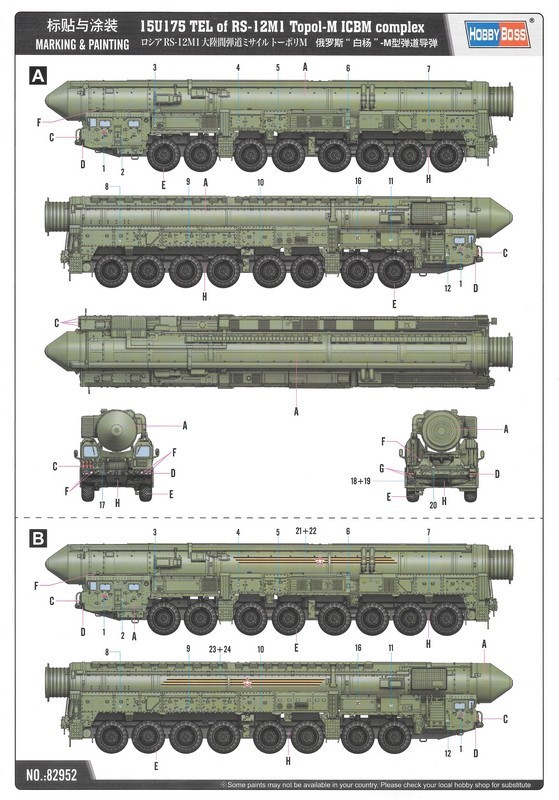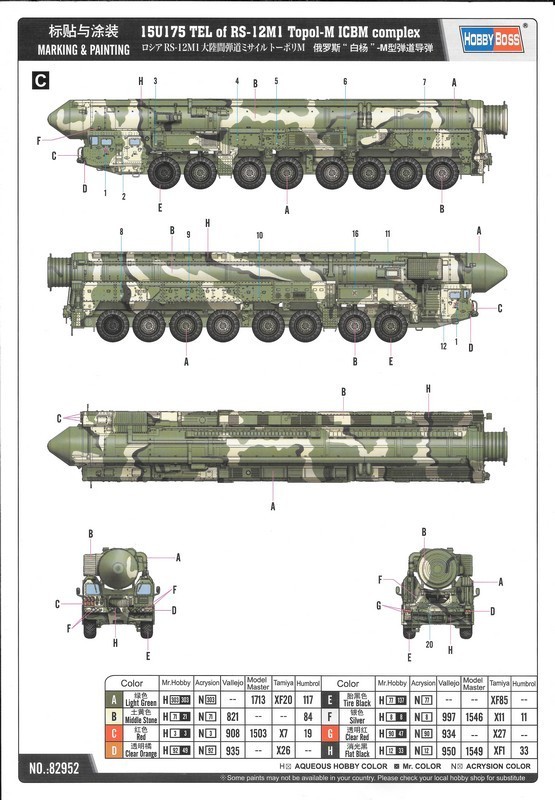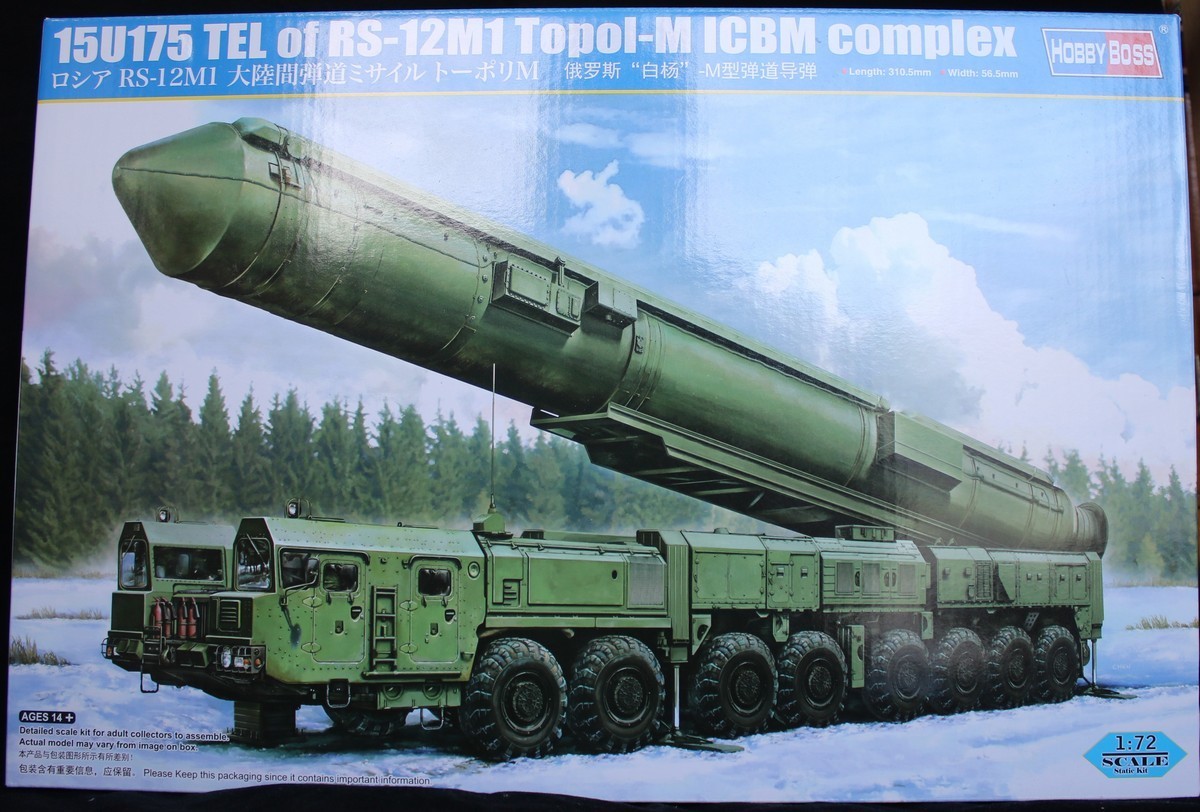Brief History
The Topol-M is a cold-launched, three-stage, solid-propellant, silo-based, or road-mobile intercontinental ballistic missile. The missile's length is 22.7 metre’s and the first stage has a body diameter of 1.9 meters. The mass at launch is 47,200 kg (about 104058.06 lb), including the 1,200 kg (about 2645.54 lb) payload. Topol-M carries a single warhead with an 800-kiloton yield. but the design is compatible with MIRV warheads. According to chief designer Yury Solomonov, the missile can carry four to six warheads along with decoys. It is claimed to have the highest accuracy of any Russian ICBM. The body of the rocket is made of winding carbon fiber. Development of the RT-2PM was approved on July 19, 1977, and carried out by the Moscow Institute of Thermal Technology headed by Alexander Nadiradze. Flight tests were conducted on the Plesetsk test site from February through December 1985. The main problem that had to be overcome during this period was the development of the battle management system. After the first test series was successfully conducted in April 1985, the first regiment with Topol missiles was put on alert in July 1985. Throughout this time work continued improving the battle management system. The test missile firings were finally completed in December 1987. The first regiment of "Topol" missiles employing a modernized mobile command center (in the area of Irkutsk) was put on alert on May 27, 1988. After Nadiradze's death in 1988 Boris N. Lapygin continued his work on the Topol missile.
At the time of the signing of the START I Treaty in 1991, the Soviet Union had deployed some 288 Topol missiles. Deployment continued, and at the end of 1996, a total of 360 Topol missiles were deployed.
The Topol missile was deployed at previously developed deployment sites. After the INF Treaty was signed in 1987 several RSD-10 Pioneer deployment sites were adapted to launch the Topol missiles. The United States expressed specific concerns during the INF treaty negotiations. When the RT-2PM missile system was deployed in the field, with its missile inside the canister and mounted on the launcher, the US contended that the canister might conceal an RSD-10 Pioneer missile. This was of concern because, unlike the single warhead of the RT-2PM Topol, the RSD-10 carried up to 3 warheads. A resolution was reached after the Soviet Union agreed to allow inspection parties to use radiation detection systems to measure fast neutron intensity flux emanating from the launch canister. A launch canister with a missile inside containing a single warhead, such as the RT-2PM Topol, emitted a different pattern of fast neutrons than did one with a missile having three warheads, such as the RSD-10.
The breakup of the Soviet Union had a significant impact on the Topol program. The dispersed manufacturing of ICBM components seriously complicated researching and building new missile systems. For example, the Minsk Wheeled Truck-Tractor Manufacturing Plant in Belarus manufactured the missiles' transporter launchers, and some 90% of the components of the guidance system were manufactured in Ukraine.
Contents
The box is cardboard of a carton design with a cardboard lid the artwork is really nice and sure to catch your attention, the box itself is not likely to take too much punishment from a courier company my one when it arrived at mine had a dink in the top outside edge.
The sprues inside the box are a sand colour and the total count of sprues is 18 from large to medium in size, 1 sprue for clear glazing for the window screens and side windows, 2 brass tubes, 16 black rubber tires 1 die-cut mask, 1 decal sheet. Instruction booklet 8 pages 7 for the building with 19 Steps windows did surprise me, and I was expecting a lot more though.
Review
The build starts with the main chassis and is detailed realistically, so the work starts with the axles and suspension sixteen in total eight on each side, it also has eight-wheel steering four front and four rear. The engine looks to be complete or complete for the scale at least the gearbox is huge with a number of drive shafts that look like they should be but could be tricky in the locating. The radiator has some amazing details on the mold, two large, molded fans that look the part. Completes the engine, gears, and drives.
The body parts of the missile launcher that has two cabs, one on each side, are remarkably well represented with rivets that scream out and give you that whole prototypical Warsaw Pact type of design. The actual mobile unit for moving the Topol M was the MAZ 7922 16x16 chassis. It was created based on Model 7917 by replacing the middle non-driven axle with driven 2-axle boogie. It was intended to be a chassis for the future missile complex 'Topol-M'. Development started in 1987 and the prototype was finished by 1990. Three front and three rear axles were driveable. The welded frame, tires, independent hydro-air suspension, and two fiberglass cabins were saved from the Model 7917. Ground clearance — 475 mm (about 1.56 ft), turning radius — 18.5 meters. Top speed — 40 kph.
The Model 7922 was fitted with a new turbocharged YAMZ 8401 V12 diesel with a capacity of 25.9 liters and power of 780 hp. It was connected to the old 4-speed gearbox. Curb weight — 39 Tonnes. Range — 400 km (about 248.55 mi). After the factory tests, MAZ 7922 turned out to be unnecessary. But in 1995 it was converted to the future mass-production MAZ 79221 chassis. This then keeps those Cold War production trucks looking essentially the same in appearance as those looking like the older cold war trucks.
Further body parts along each side of the truck look more High-Tec than those on the prototype prime mover Maz’s 7922 version and are filled with inspection panels for the electronics storage for spare parts and some of the guidance system. This detail is very visible and from a modelling side of things looks very good and true to the technical pictures I have found online.
The lift for the ICBM is quite honestly one of the better parts for fitting and clips onto the bottom of the ICBM perfectly a couple of issues I do see is if you have the missile in the launch position, you, will have to make a small cut in the metal tubes and then bend the cut metal upwards internally. I am guessing that is to stop it coming down, but I am looking at a couple of other easier ways in which you will be able to have in either position.
The glazing, particularly on the front screen on either side looks too thick, and this creates a distortion when trying to look through them using natural light, the side screens also though not as bad but carry similar distortion.
The decals are Sharpe enough to see and look thin enough so you will not have any issues with them.
The instruction booklet is just a printed in black and white and does look busy on more than one page I am not referring to these as bad, but you will need to keep looking at them while building and before each new part
The sheet which gives you your options on camouflage is of a hi-standard and does give you painting options from various companies Mr Hobby, Tamiya, and Vallejo to name but a few.
Conclusion
So, the model itself does look impressive when opening the box and does fill the box right up, I do love to try dry fitting and removing several parts from their sprues which has proved to me that overall, most parts do seem to fit quite well but there are several issues that I do see with this kit my first obvious one is the price tag of this kit is £120 most of the world if not all of the world are in the middle of an economic and financial crisis and I know for myself I would not have the money to shell out on 1/72nd scale kit. The other which if I am being honest really threw me the lack of photoetch parts you have just gone to your favourite model shop or online you have gotten lucky and brought one of these kits for £100 you get home open the box and low and behold no real extras apart from die-cut mask set and two metal tubes, surely at this type of expense there should be more than just that. Add to that the instructions which if you are not careful could catch you out and you will need to keep monitoring them. It is a stunning kit in respect of the new tooling molds and just how good it looks. But personally, I cannot help but feel that Hobby Boss has dropped the ball here, a little bit of thought some extras just to bring the level of detail up that bit more would surely lead to happy modellers, happily telling there modelling friends what a fantastic kit it is because of the enhanced parts like photoetch and say weighted wheels.
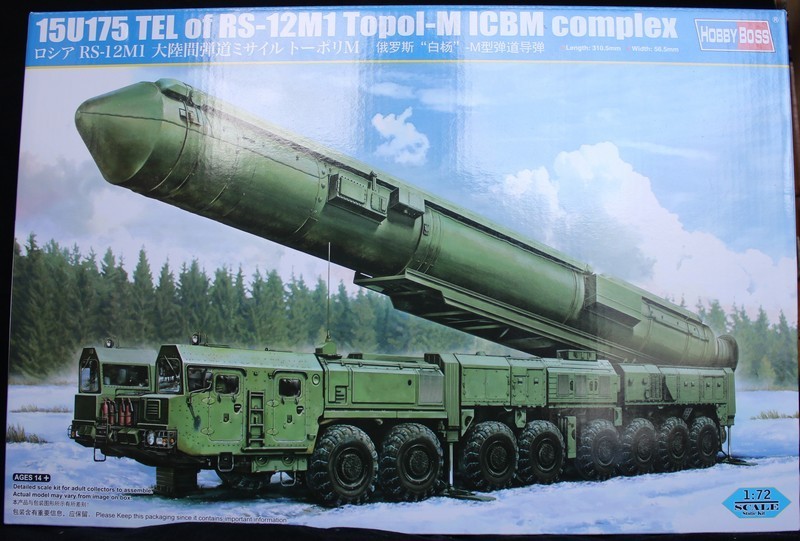
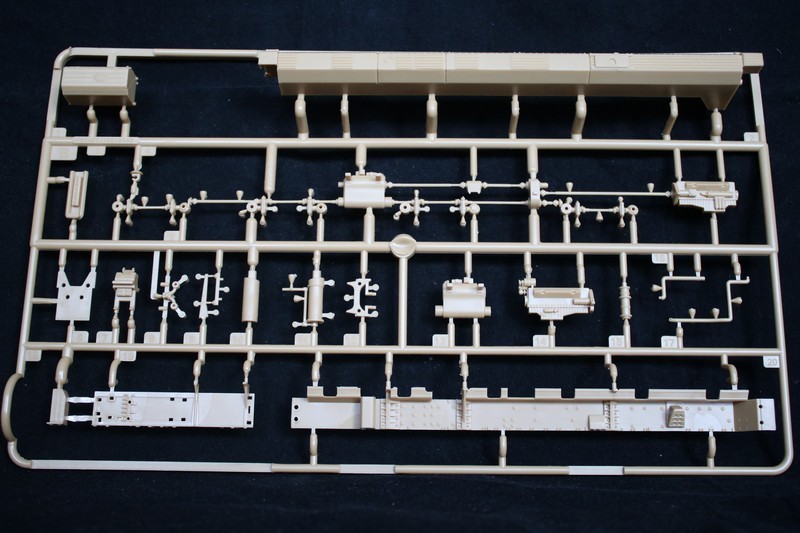

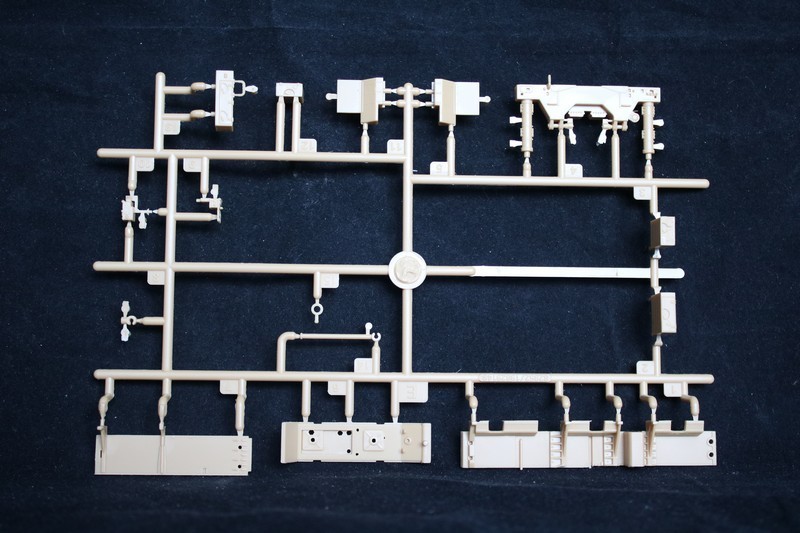

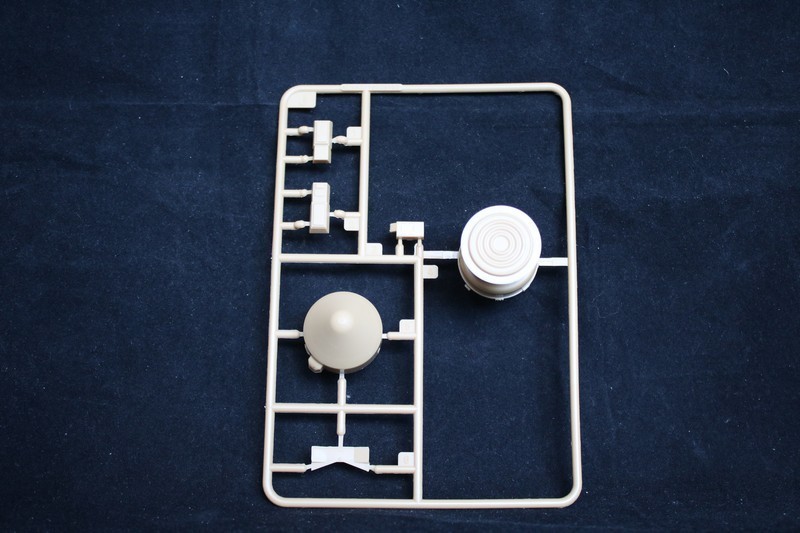

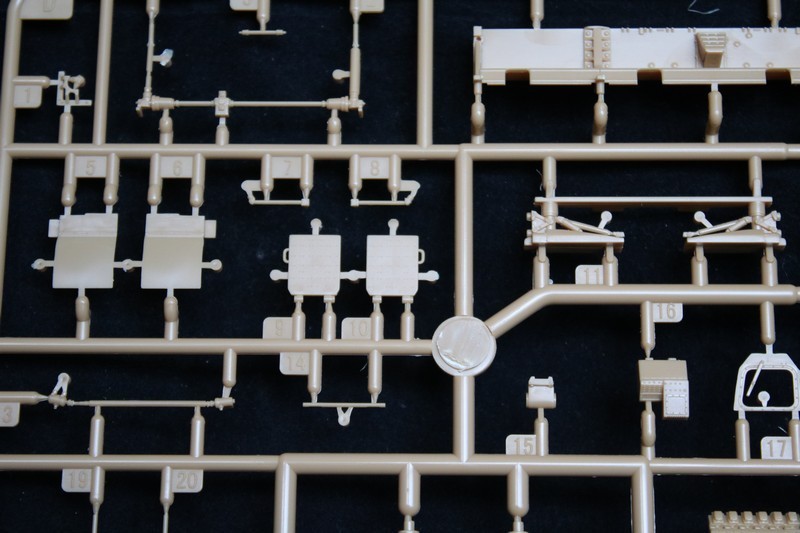
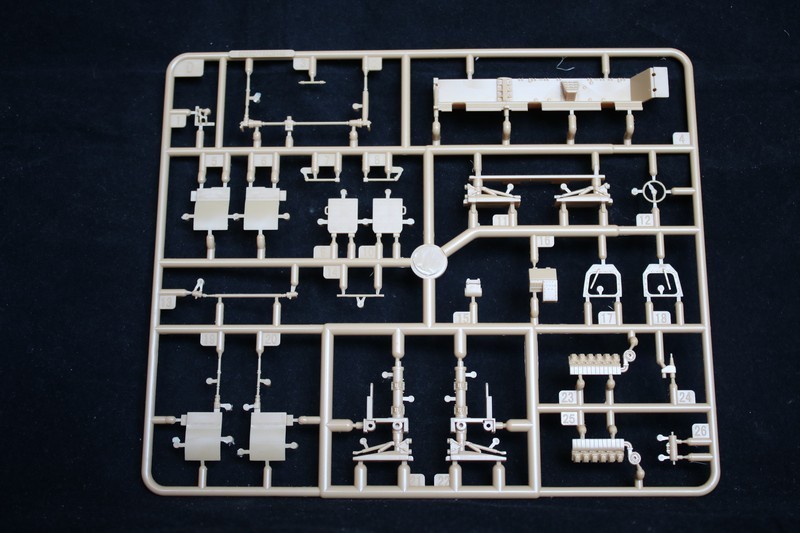
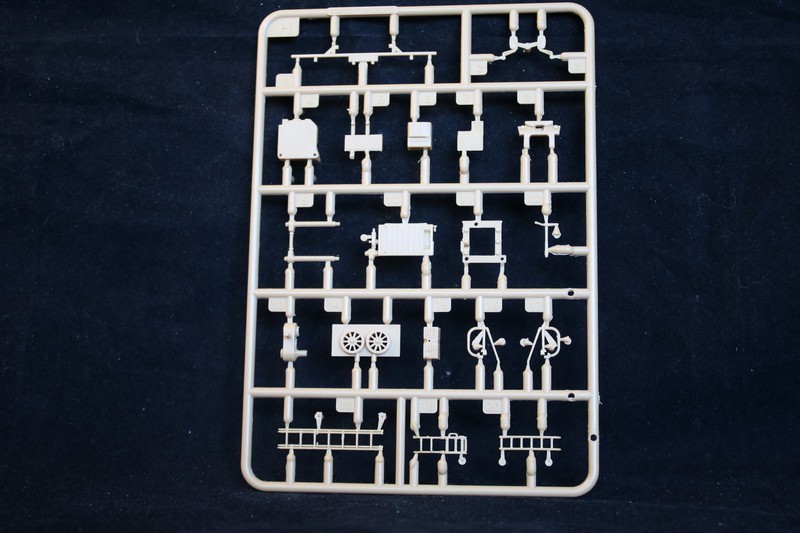
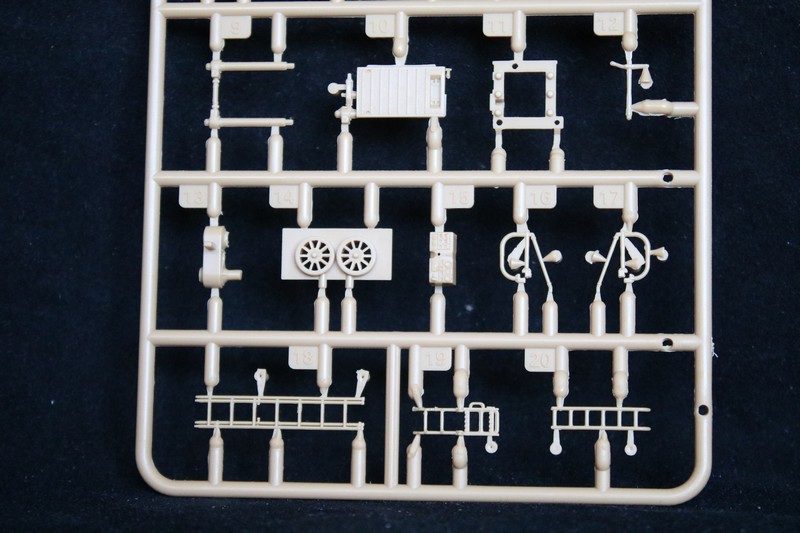
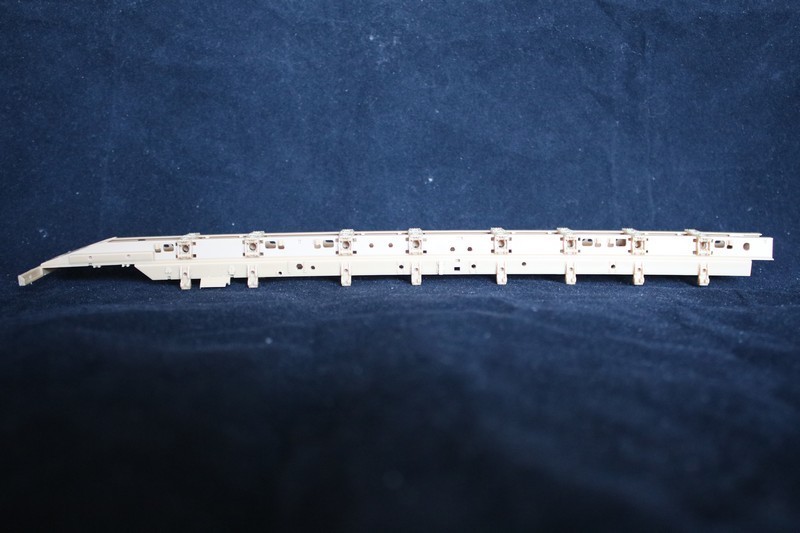

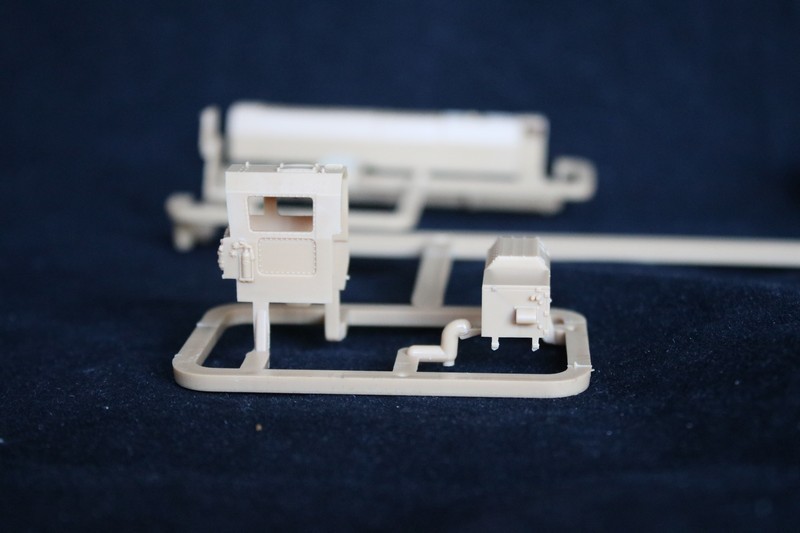

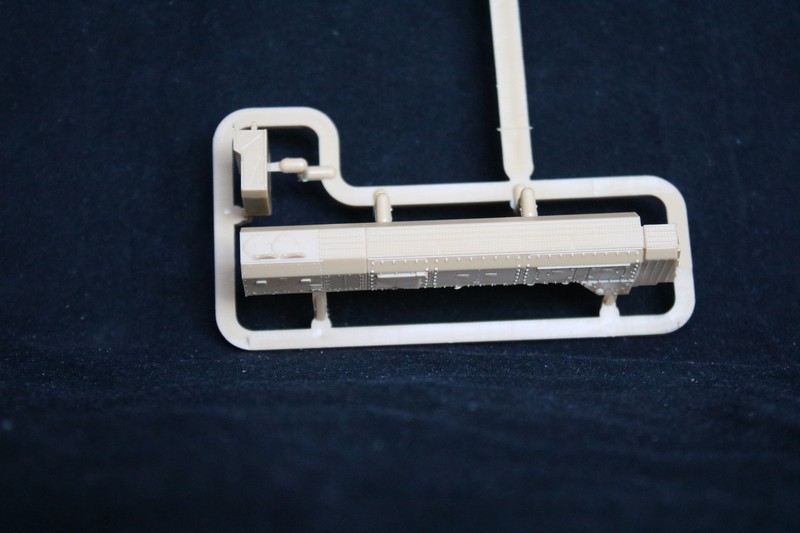
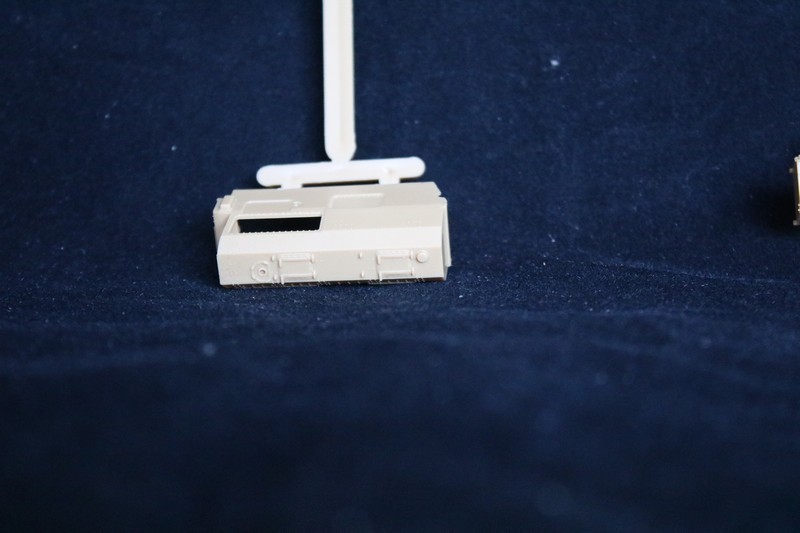





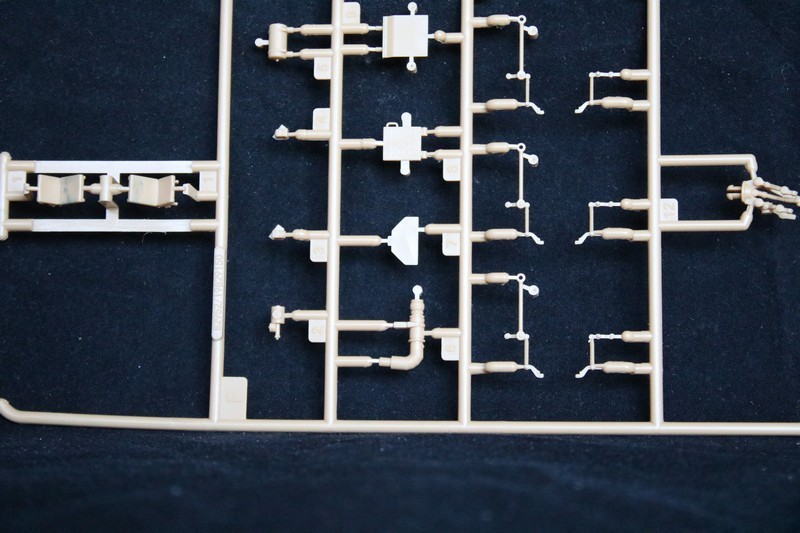
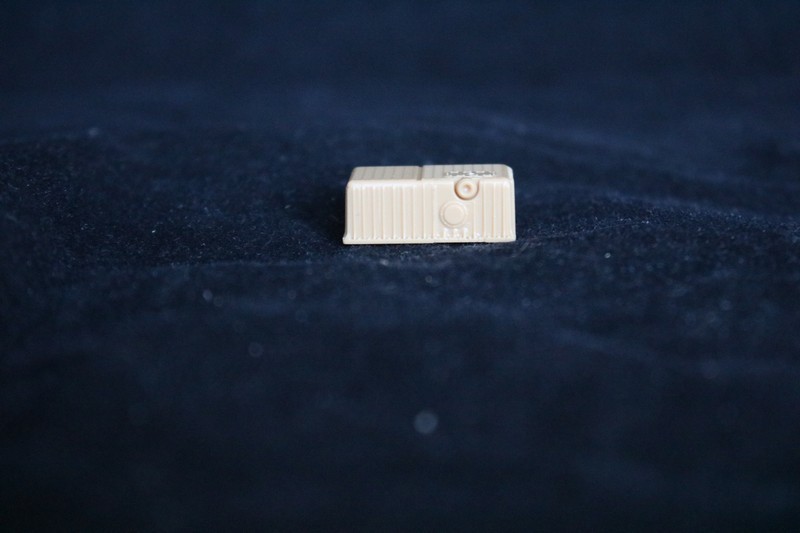

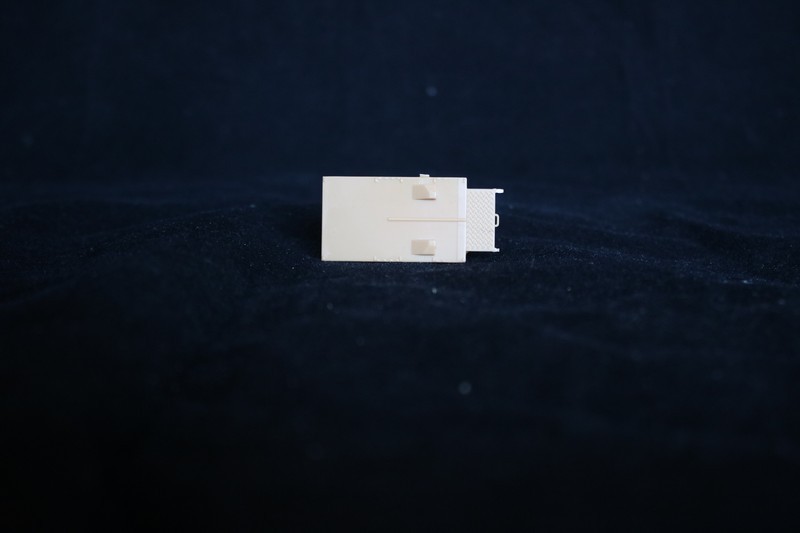

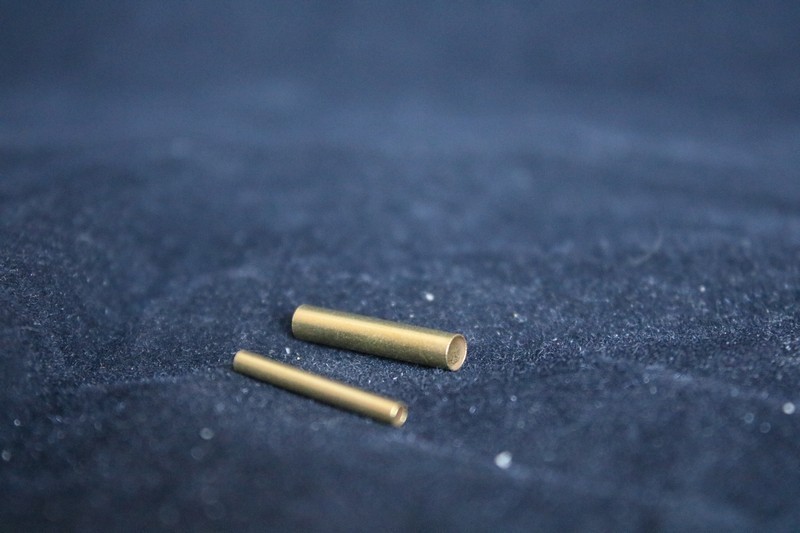

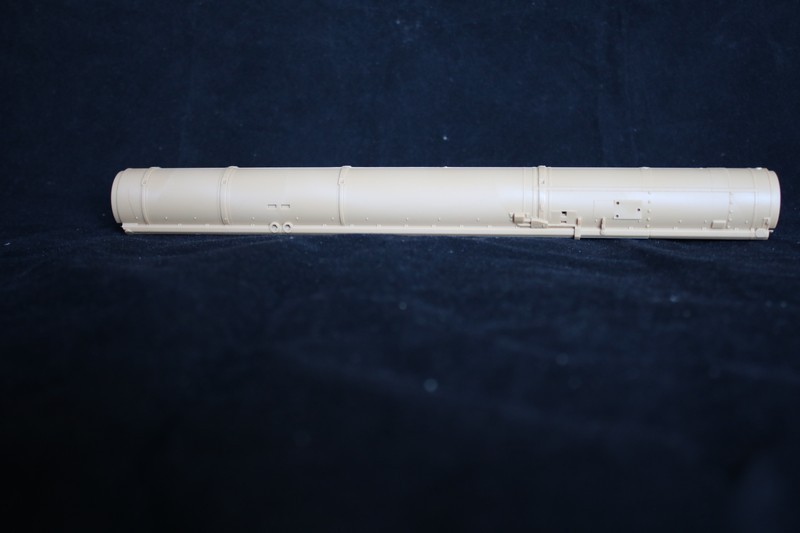
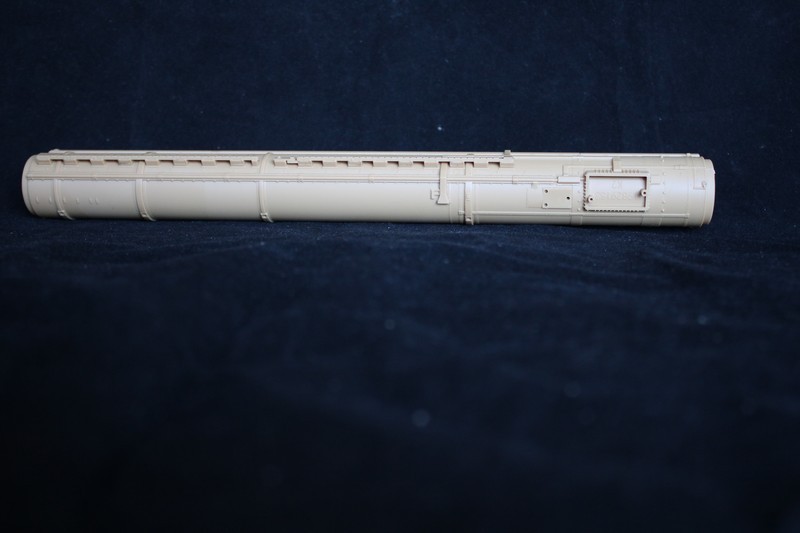

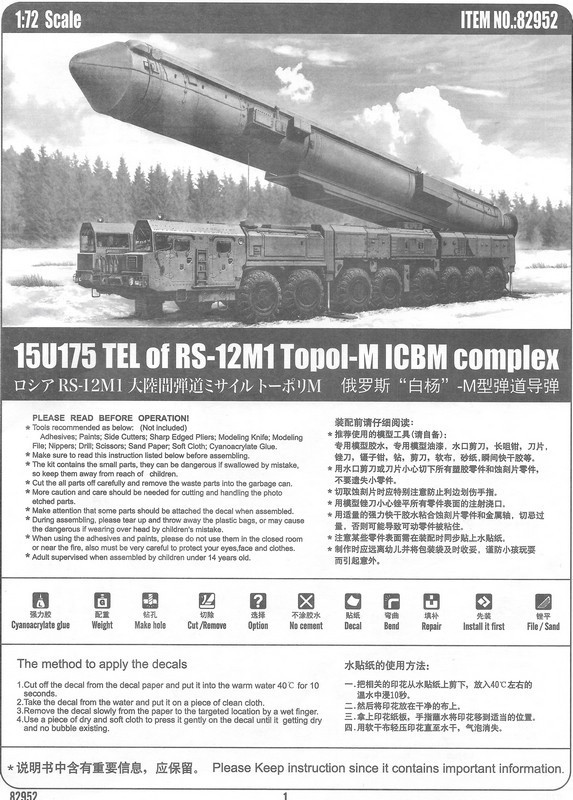

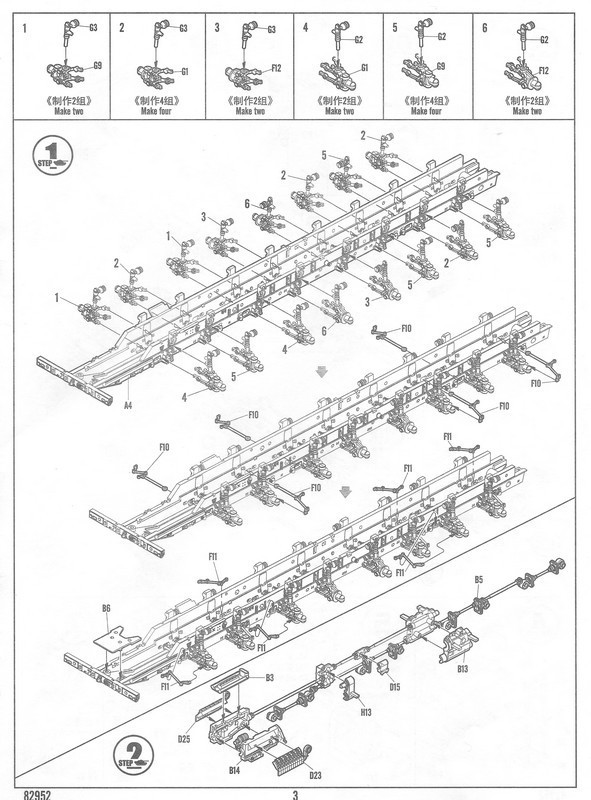
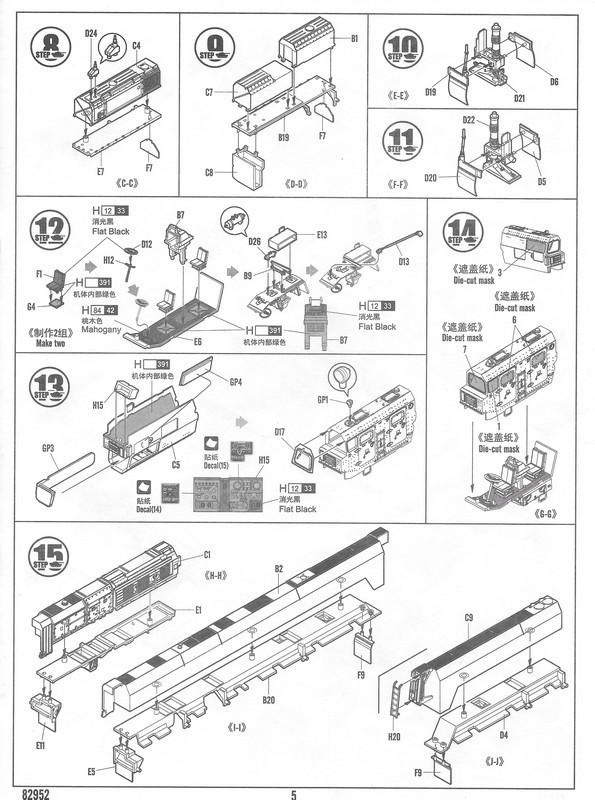
Die cut masks


